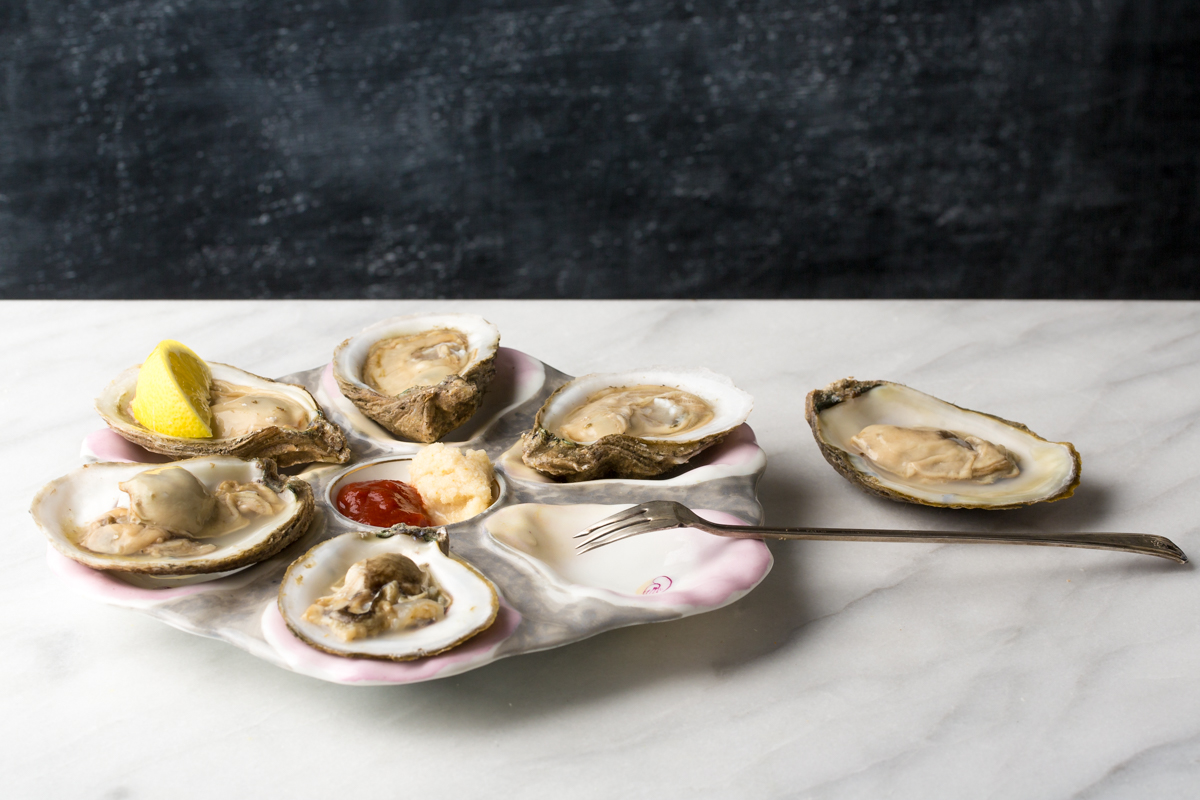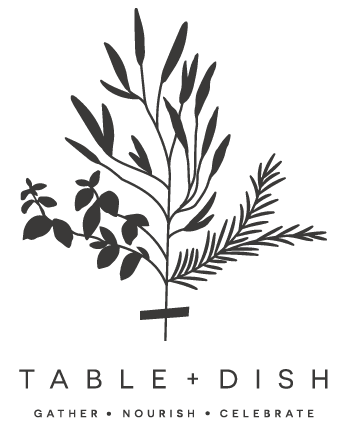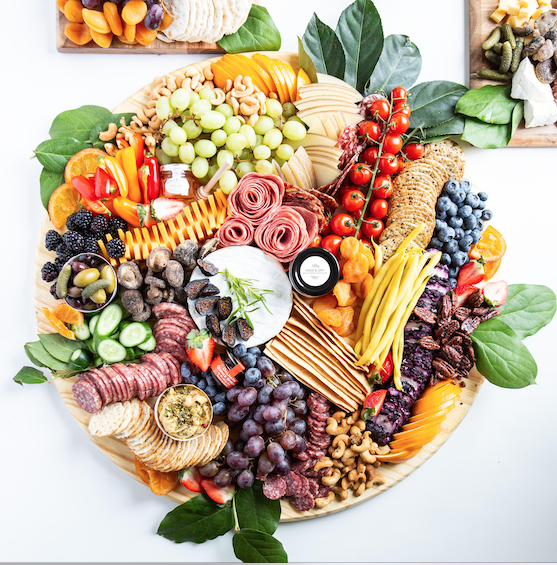 I’m an East coast girl. Actually I’m happy on any coast but most of my time has been spent in the East. Oysters are one of my favorite foods. Until now it has been a food I only order out. Heinen’s always has a beautiful selection of fresh oysters tempting me every time I order fish. I finally decided to educate myself and learn to open or “shuck” my own oysters. It’s easier than I thought! You can do it too! Have you tried shucking oysters! I feel pretty invincible now, or at least slightly dangerous!
I’m an East coast girl. Actually I’m happy on any coast but most of my time has been spent in the East. Oysters are one of my favorite foods. Until now it has been a food I only order out. Heinen’s always has a beautiful selection of fresh oysters tempting me every time I order fish. I finally decided to educate myself and learn to open or “shuck” my own oysters. It’s easier than I thought! You can do it too! Have you tried shucking oysters! I feel pretty invincible now, or at least slightly dangerous!
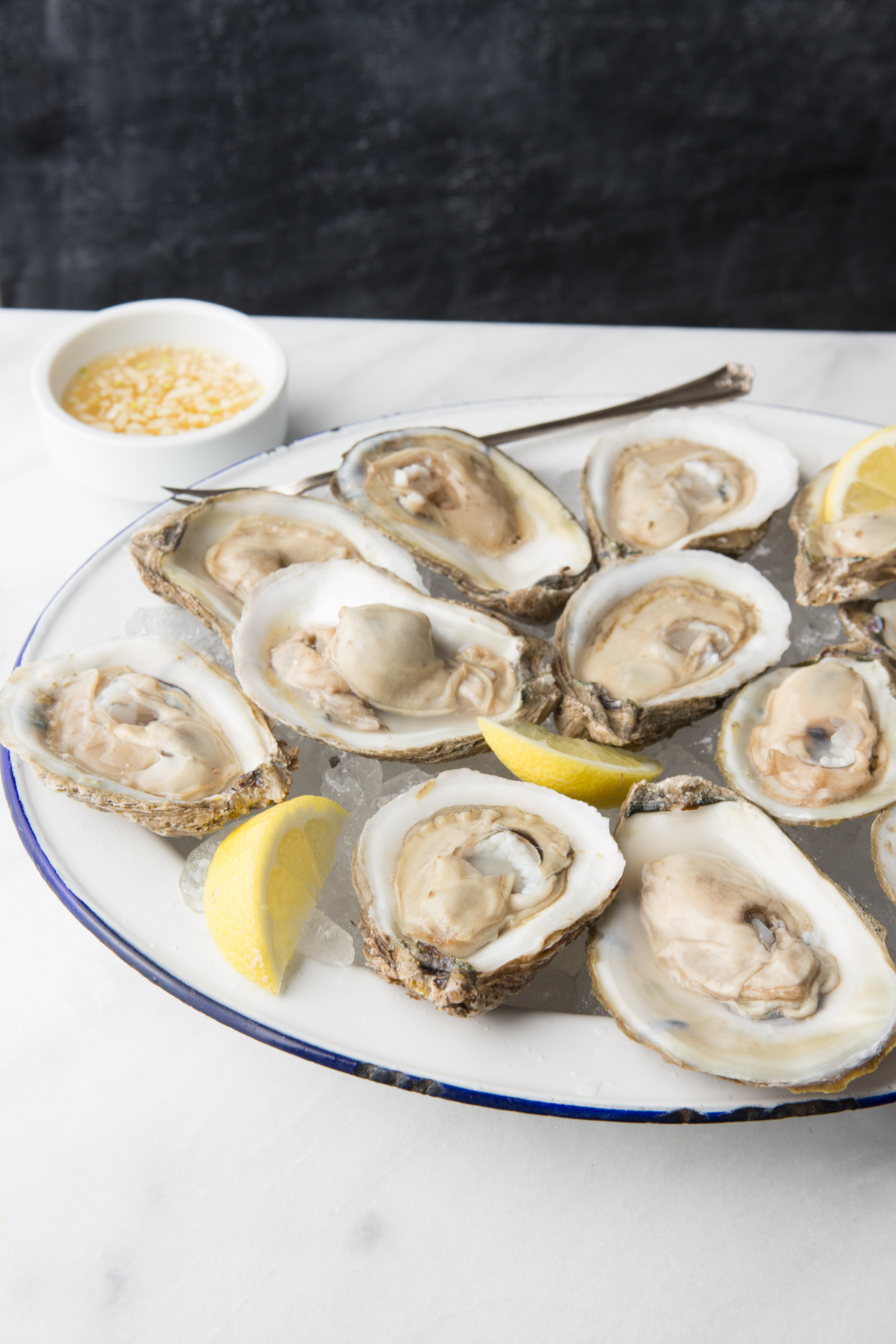 Here’s my disclaimer… This has been my first time shucking oysters. If you’re looking at my opened oysters and thinking they look a little rough keep in mind I’m a rookie. I plan to get a lot more practice now that I know just how simple it is to enjoy fresh oysters at home.
Here’s my disclaimer… This has been my first time shucking oysters. If you’re looking at my opened oysters and thinking they look a little rough keep in mind I’m a rookie. I plan to get a lot more practice now that I know just how simple it is to enjoy fresh oysters at home. 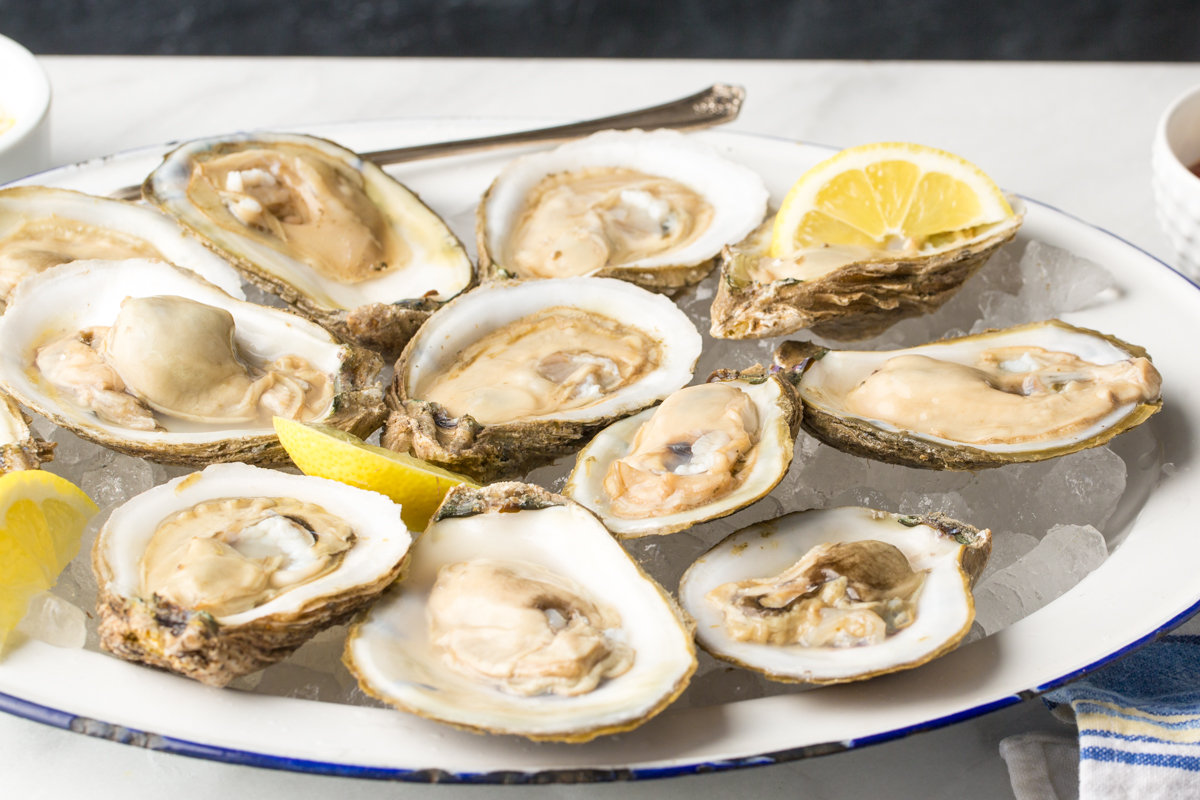
You don’t need fancy oyster plates or utensils. The only tool you will need is a kitchen towel and an oyster knife. Luckily you can pick one up right at the seafood counter at Heinen’s. When shucking or opening your oysters you will want to have a tray of crushed ice to set them on until you’re finished shucking and ready to enjoy them. You want to keep them fresh right up to the point of eating them. It’s easy and delicious to open and eat or you can embellish them with a bit of cocktail sauce, horseradish, fresh lemon or mignonette sauce (a mixture of minced shallots and white vinegar) but they are just as delicious right out of the shell.
There is a WORLD of difference between a fresh oyster and a not-so-fresh oyster. Prioritize freshness over all else and you’ll have a great experience every time.
Know when your oysters are harvested
Ask the server or supplier; request to see bag tag if necessary. Don’t be shy!
Check for oyster liquor
Fresh oysters should appear well-hydrated with sea water, so toss dry oysters that stick to their shells.
Don’t let your oysters submerge in tap water. Scrub any sand or dirt off the outside of the oysters and give them a light rinse.
Freshwater will kill them. You want to eat your oysters alive!
Start by scrubbing . These are Blue Point Oysters from Heinen’s.
 Use the right tool
Use the right tool
Get yourself an oyster knife. Shuck on a flat surface. Have a glove or kitchen towel to protect your hand. Start at the hinge.
Start at the hinge.
Shimmy the knife blade, pointed down, into the hinge until it feels secured. Twist/torque the knife like turning a doorknob to pop open the shell. Don’t pry up and down.
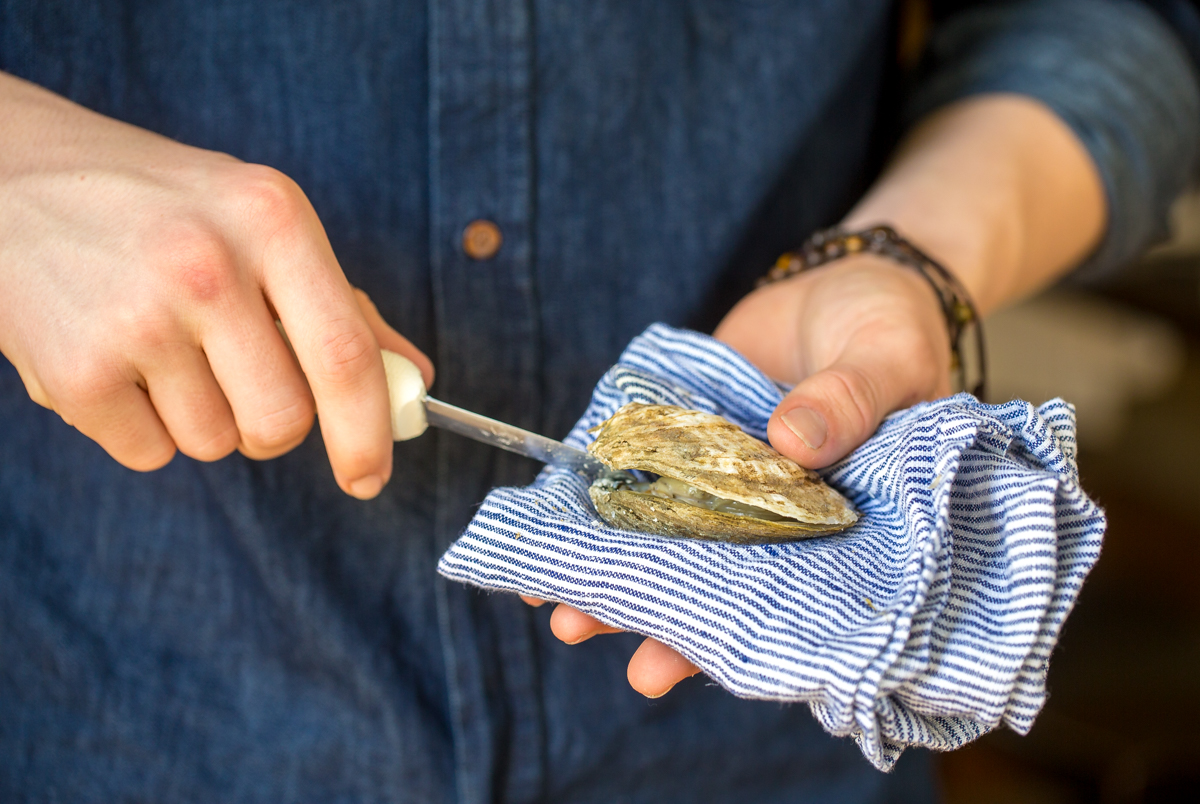
Slide the blade across the top inside shell to sever the adductor muscle. Remove top shell. Then slide your knife under the bottom adductor muscle to dislodge it entirely.
How to make it pretty
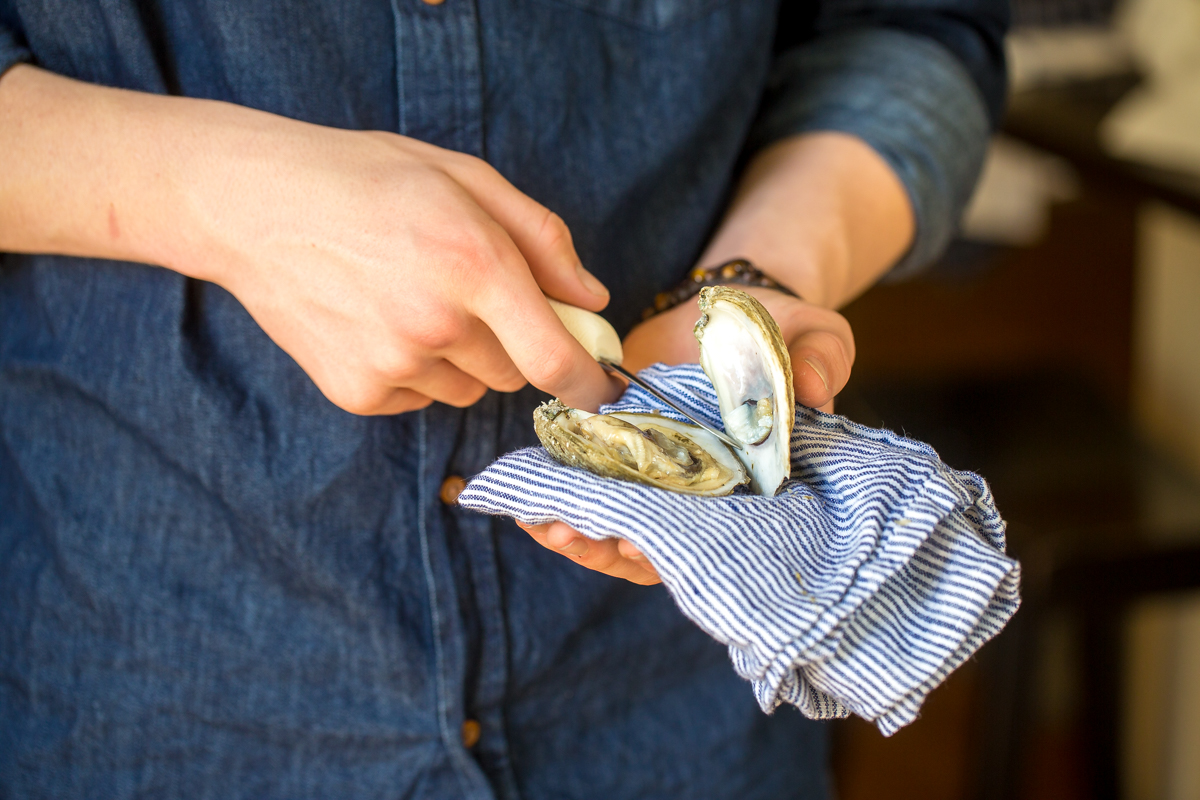
Shucking a clean oyster takes practice. One trick is to turn the oyster over in its shell so that the bottom belly is up. Remove all broken shell or grit with tip of your knife.
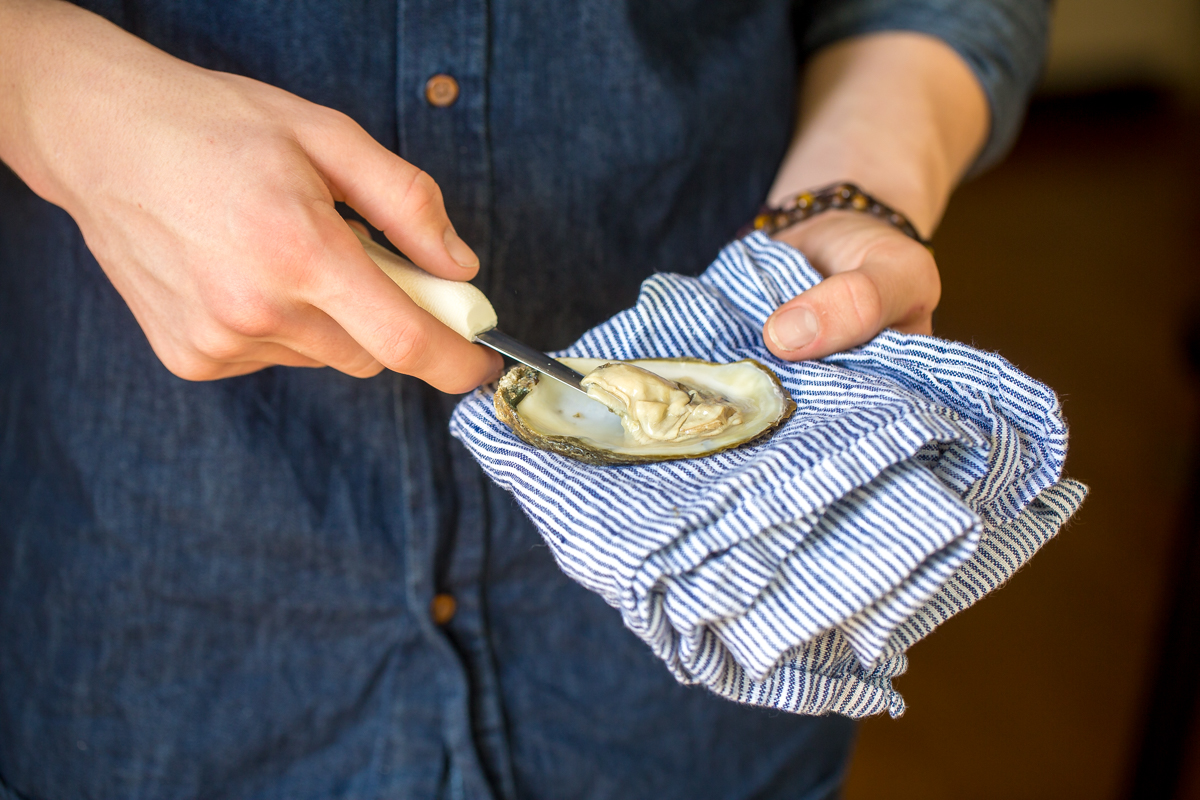
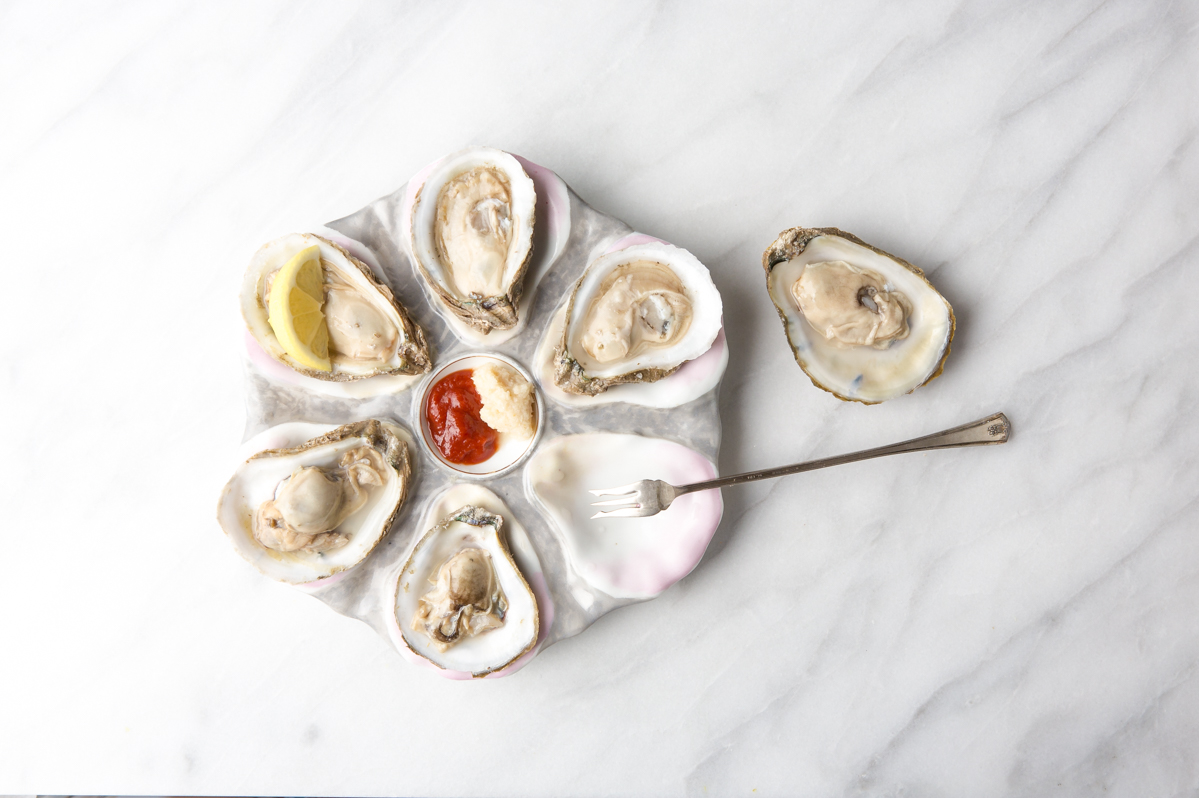
I’ve compiled a bit of information to help you enjoy your oysters. Some of this I know from personal experience but some of the health facts I’ve just learned while researching for this post. How exciting to realize that my favorite food is also so good for me.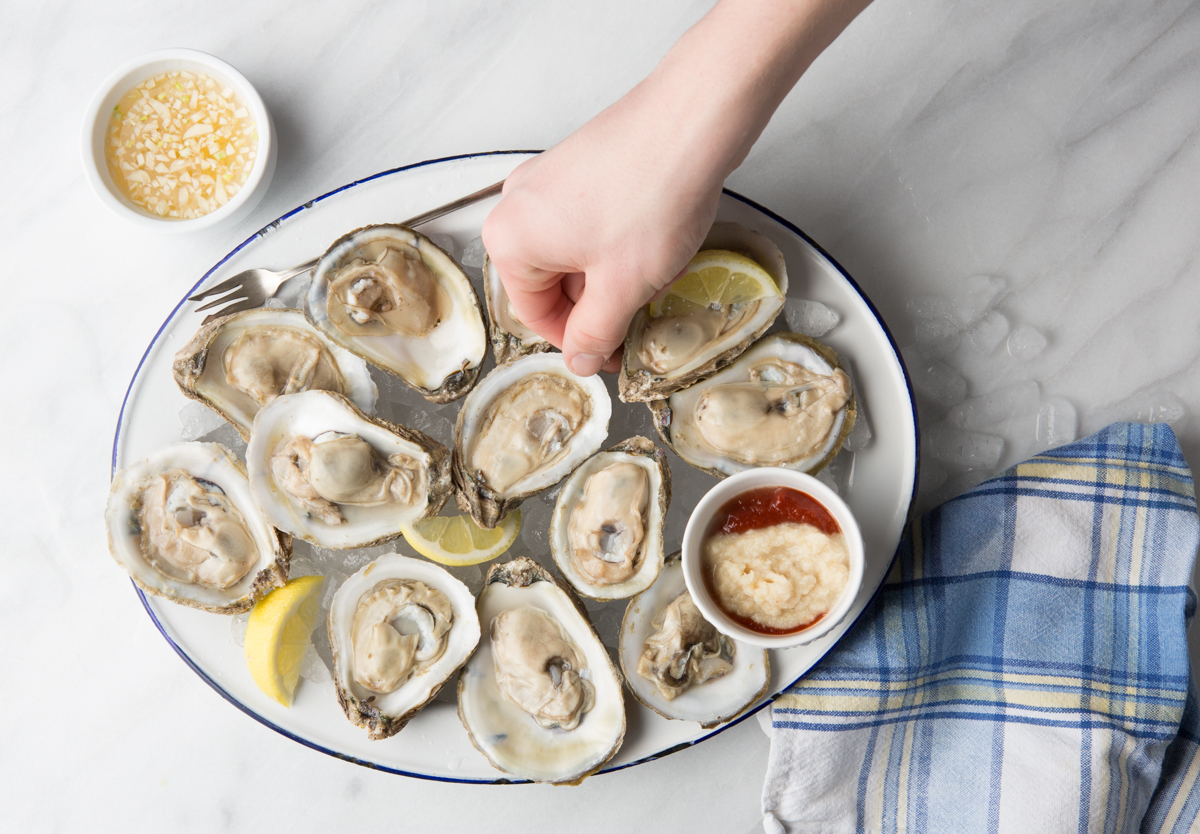
There are many species of oysters are harvested in the US
Atlantic / East Coast native (Crassostrea virginica), Pacific / West Coast non-native (Crassostrea gigas), Kumamoto (Crassostrea sikamea), European Native / Flat (Ostrea edulis), and Olympia / West Coast native (Ostrea lurida). There are many others in the world.
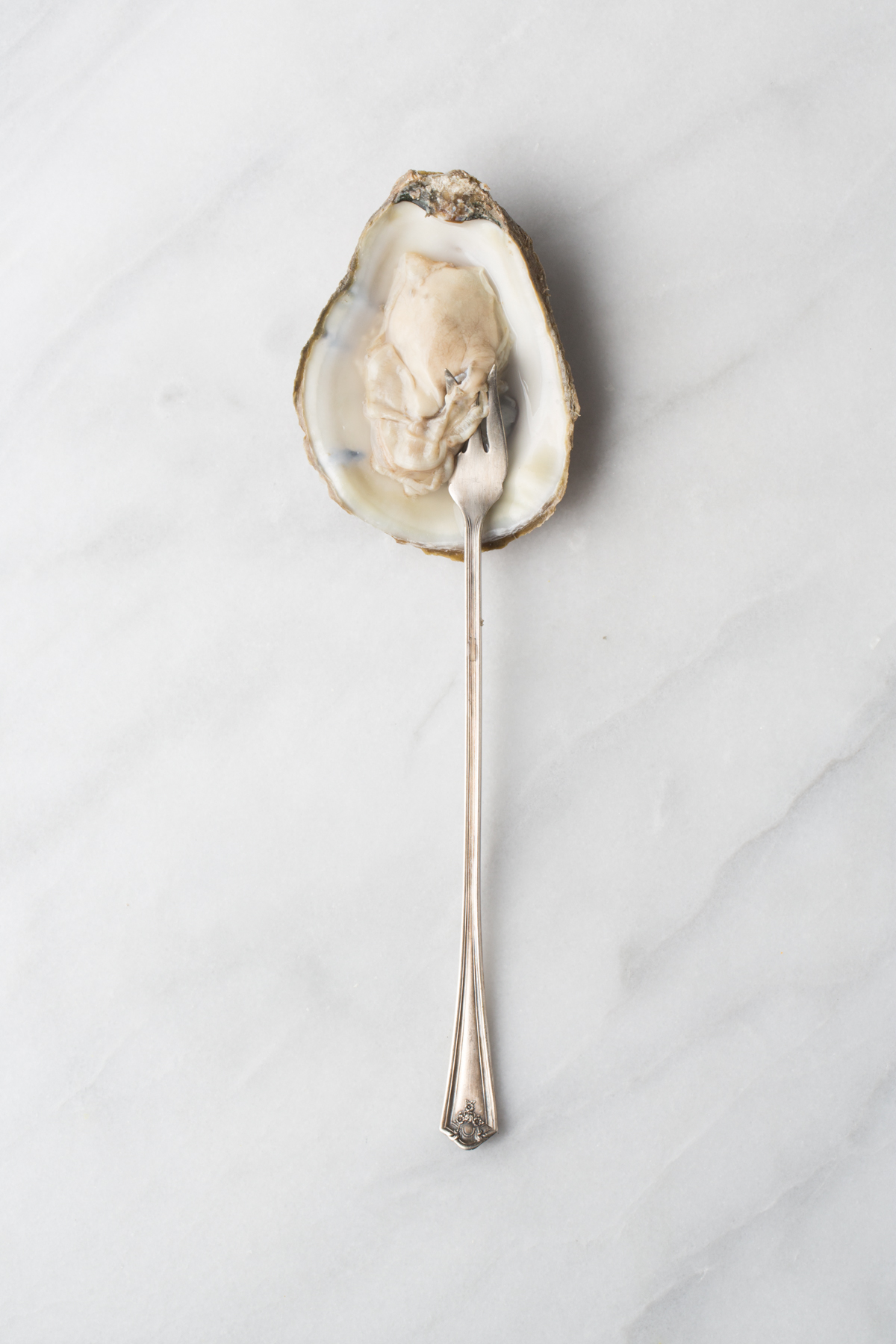 East Coast versus West Coast
East Coast versus West Coast
Different water & species result in different tastes. East Coast oysters tend to be more light-bodied, briny, crisp, buttery. West Coast oysters tend to be more medium-bodied, minerally, creamy, and sweet.
Oyster tasting is similar to wine tasting. You’re trying to absorb and appreciate the subtle differences in flavor and texture imparted by climatic conditions. The culmination of these effects is what oyster aficionados call “meroir.”
The 6 S’s of Pro Oyster Tasting
#1 SEE: Feast with your eyes! Study the shell, shape, color.
#2 SMELL: It should smell sea-breezy and sweet, not fishy at all.
#3 SIP: Sip the oyster liquor to get a sense of the salinity.
#4 SLURP: Shimmy the oyster meat loose, tilt the flat edge of the shell to your lips and slurp! Don’t discard the oyster liquor (faux pas).
#5 SAVOR: Chew a few times to get the full body taste; notice the progression from nose (salty) to body (sweet/flavors) to finish (lingering aroma).
#6 SHELL: Flip the shell over and admire the collaboration between nature & farmer.
All oysters fluctuate in taste and texture throughout the year.
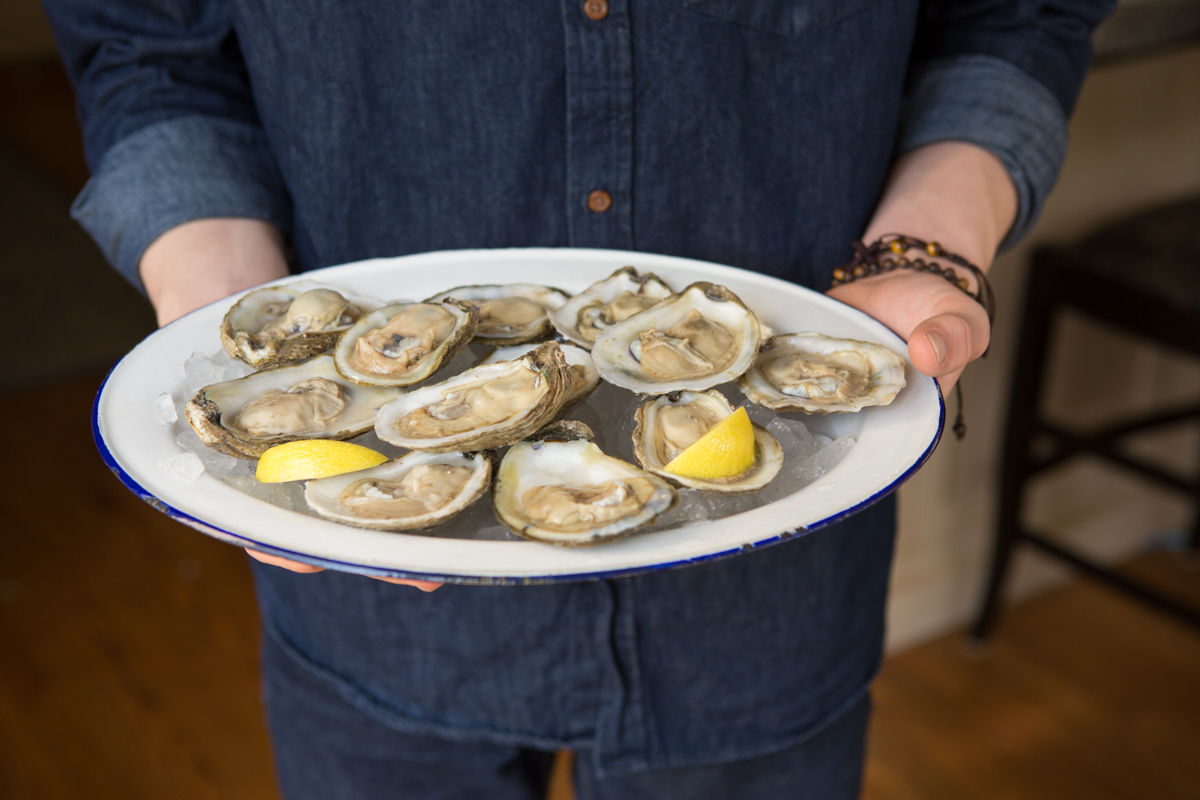
Here’s some of the amazing health benefits I have learned about Oysters. I can’t verify the validity of each claim but over all the information sure seems to claim that Oysters are a super food!
Oysters represent one of the most nutrient packed foods with the lowest calories versus the volume of serving size. This means that people trying to lose weight can keep their body packed with the nutrients it needs, without adding too much weight on their frame. Proteins are some of the most essential parts of our diet, and oysters are a very strong source.
Oysters can positively impact heart health in a variety of ways, but primarily, the high levels of omega-3 fatty acids versus omega-6 fatty acids are what impact the cholesterol so greatly. Omega-3 fatty acids are known as “good” forms of cholesterol, and the high ratio of “good” to “bad” cholesterol (omega-6 fatty acids) makes oysters a major player in heart health. The high potassium and magnesium content of oysters can help to lower blood pressure and relax the blood vessels, thereby increasing circulation and oxygenation of the blood and reducing strain on the cardiovascular system as a whole. Finally, the vitamin E in oysters increases the strength and flexibility of cellular membranes, which is a third level of protection against dangerous heart diseases.
The unprecedented levels of zinc in oysters result in a number of health benefits, including quicker wound healing rates, and boosted immune system against various infections and microbes. Zink is a major benefit to men’s health which is why oysters have earned the claim of an aphrodisiac.
Oysters are also a very impressive source of iron, with more than 90% of our daily requirements in each serving. Iron is a key component in the formation of red blood cells in the body, and are the primary defense against anemia, also known as iron deficiency, which can lead to fatigue, cognitive malfunction, stomach disorders, and general muscle weakness. Also, with a fresh supply of healthy blood cells in the circulatory system, organ systems have high levels of oxygenated blood to stimulate their activity, making them function efficiently and boosting the overall metabolic rate of the body.
ENJOY!
